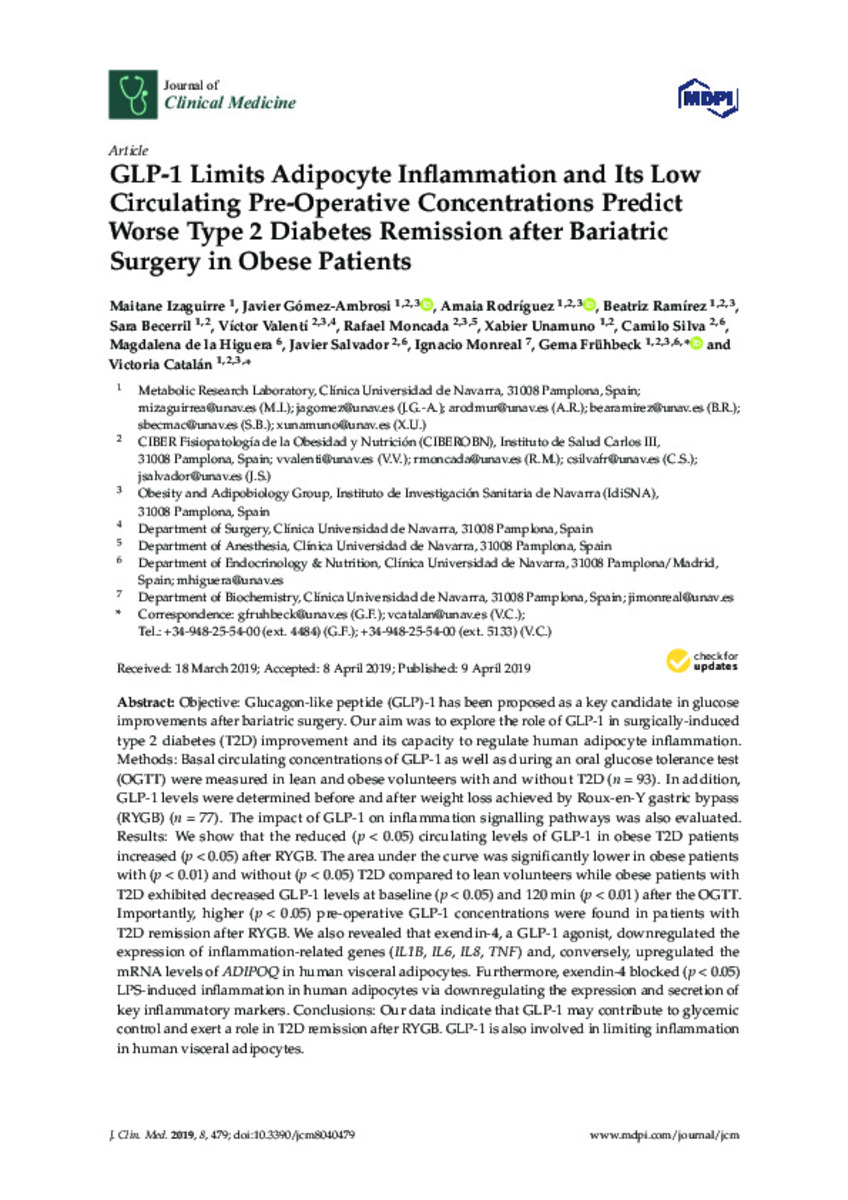GLP-1 limits adipocyte inflammation and its low circulating pre-operative concentrations predict worse type 2 diabetes remission after bariatric surgery in obese patients
Keywords:
GLP-1
Inflammation
Obesity
Adipose tissue
Bariatric surgery
T2D remission
Note:
This is an open access article distributed under the Creative Commons Attribution License which permits unrestricted use, distribution, and reproduction in any medium, provided the original work is properly cited
Citation:
Izaguirre, M. (Maitane); Gomez-Ambrosi, J. (Javier); Rodriguez, A. (Amaia); et al. "GLP-1 limits adipocyte inflammation and its low circulating pre-operative concentrations predict worse type 2 diabetes remission after bariatric surgery in obese patients". Journal of Clinical Medicine. 8 (4), 2019, 479
Statistics and impact
0 citas en

0 citas en

Items in Dadun are protected by copyright, with all rights reserved, unless otherwise indicated.








